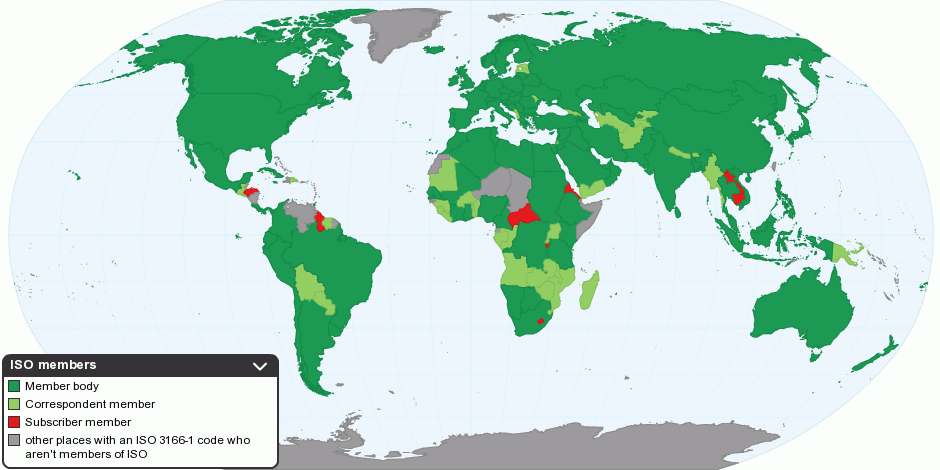This map shows list of International Organization for Standardization (ISO) members. ISO is the world's largest developer and publisher of International Standards.
ISO is a network of the national standards institutes of 163 national members, out of the 247 total countries in the world, one member per country. Founded on 23 February 1947, the organization promulgates worldwide proprietary industrial and commercial standards. It has its headquarters in Geneva, Switzerland, that coordinates the system.
ISO is a non-governmental organization that forms a bridge between the public and private sectors. On the one hand, many of its member institutes are part of the governmental structure of their countries, or are mandated by their government. On the other hand, other members have their roots uniquely in the private sector, having been set up by national partnerships of industry associations. Therefore, ISO enables a consensus to be reached on solutions that meet both the requirements of business and the broader needs of society.
ISO has three membership categories:
- Member bodies are national bodies that are considered to be the most representative standards body in each country. These are entitled to participate and exercise full voting rights on any technical committee and policy committee of ISO.
- A correspondent member is usually an organization in a country which does not yet have a fully-developed national standards activity. These members are informed about ISO's work, but do not participate in standards promulgation.
- Subscriber membership has been established for countries with very small economies. They pay reduced membership fees that nevertheless allow them to maintain contact with international standardization.
ISO has developed over 18,000 International Standards on a variety of subjects and some 1100 new ISO standards are published every year. The full range of technical fields can be seen from the listing International Standards website (follow the reference link below)
15 years ago

